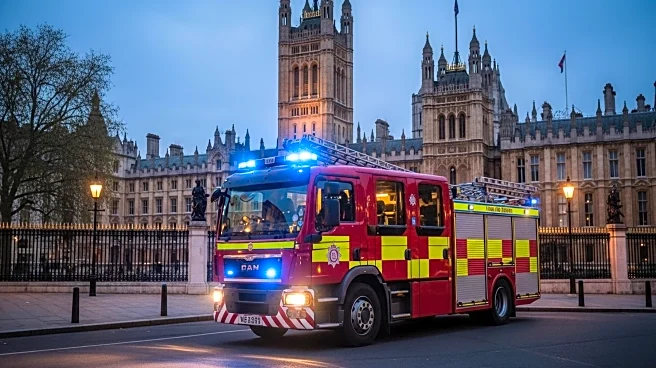What's Happening?
Women's Aid NI has raised concerns about the potential risks posed by the UK Emergency Alert system to victims of domestic abuse. The system, which sends alerts to mobile phones in cases of imminent danger such as extreme weather or terror attacks, was tested recently. Women's Aid NI highlighted that the alert could inadvertently reveal hidden phones that victims use to maintain contact with support networks, thereby increasing the risk of discovery by their abusers. The charity emphasized the importance of disabling these alerts on hidden devices to prevent them from being exposed during the test. The alert system is considered a vital tool for public safety, but the charity warns it could cause distress and fear among those in coercive relationships.
Why It's Important?
The concerns raised by Women's Aid NI underscore the complex challenges faced by domestic abuse victims in maintaining their safety and privacy. The emergency alert system, while crucial for public safety, could inadvertently compromise the security of individuals in abusive situations. This highlights a broader issue of balancing technological advancements in public safety with the nuanced needs of vulnerable populations. The potential exposure of hidden phones could lead to increased isolation and control by abusers, further endangering victims. This situation calls for a careful consideration of how emergency systems are implemented to ensure they do not inadvertently harm those they are meant to protect.
What's Next?
Women's Aid NI has advised individuals with hidden phones to disable emergency alerts or turn off their devices during the test to avoid detection. The charity has also provided resources and instructions on how to manage these alerts safely. Moving forward, there may be discussions on how to refine the alert system to better accommodate the needs of domestic abuse victims. This could involve developing alternative methods for delivering emergency alerts that do not compromise the safety of vulnerable individuals. Stakeholders, including government agencies and advocacy groups, may need to collaborate to address these concerns and enhance the system's inclusivity.
Beyond the Headlines
The situation highlights the ethical considerations in deploying technology for public safety. It raises questions about how to ensure that such systems do not inadvertently harm marginalized groups. The need for inclusive design in public safety technology is evident, as is the importance of consulting with advocacy groups to understand the diverse needs of all potential users. This incident could prompt a reevaluation of how emergency systems are designed and implemented, potentially leading to more tailored solutions that protect all members of society.











